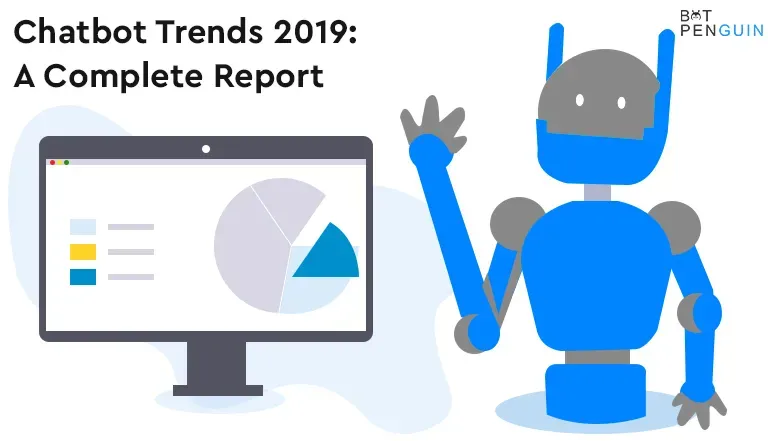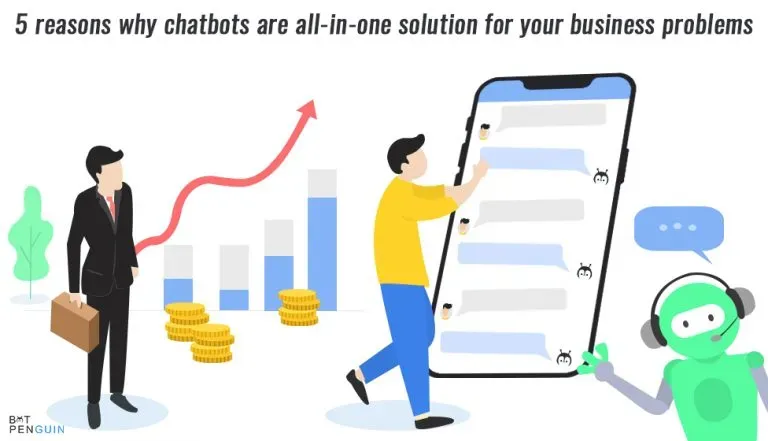Introduction
ChatGPT's astounding capabilities have enterprises racing to integrate conversational AI.
Recent projections by Grand View Research estimate the chatbot market will reach $19.6 billion by 2027 as more companies automate customer service and workflows. However, developing custom enterprise-grade chatbots with GPT-3 intelligence involves unique considerations.
While ChatGPT excels at human-like conversation, it lacks the accuracy for business-critical applications. Fact-checking, compliance, and integrating with databases pose challenges. Extensive training on company data is required to align responses. Ongoing model updates must account for new product features and guidelines.
Multimodal interfaces with chat, voice, and visuals require the orchestration of multiple AI engines. With strategic data management, infrastructure, and governance, enterprises can train supervised models to create personalized and trusted chat experiences.
As per McKinsey, AI-driven automation could raise productivity growth globally by 0.8 to 1.4% annually.
The opportunity is massive!
Businesses can unlock transformative efficiencies by following best practices for custom enterprise chatbot development.
ChatGPT and its Applications in Enterprises
To build an effective custom ChatGPT app, it's essential to understand its capabilities and potential applications in enterprises.
ChatGPT and its Capabilities
ChatGPT is a natural language processing model that leverages deep learning algorithms to generate human-like text-based responses to user queries.
It can understand the context and intent behind user inputs, enabling it to provide personalized and insightful responses. ChatGPT can be trained on specific datasets to optimize its performance for specific use cases, making it a powerful tool for developing custom chatbots.
Potential Applications of Custom ChatGPT in Enterprises
The potential applications of ChatGPT in enterprises are limitless. Here are a few use cases where ChatGPT can be leveraged:
- Customer Service: Custom ChatGPT can be used to develop customer service chatbots that understand customers' queries and provide relevant solutions effectively.
- Marketing and Sales: Custom ChatGPT can be used to develop chatbots that assist customers during the sales process, guiding them through purchase decisions and addressing related queries.
- Human Resources: Custom ChatGPT can be used to develop chatbots that assist employees in onboarding, training, and support tasks.
Defining Goals and Objectives for Your Custom ChatGPT App
Having a clear understanding of your goals and objectives is vital when building a custom ChatGPT app. Here are the key steps to determine the specific requirements and objectives of your app.
Identifying the Specific Requirements and Objectives of the App
The first step is to identify the specific use case and requirements of your app. Identify the target audience, their specific needs, and the nature of the interactions that your chatbot will handle.
Determine the integration points with existing systems and the data sources required to train and optimize the chatbot's performance.
Determining the Expected Outcomes and Benefits
Once the requirements are defined, determine the expected outcomes and benefits of the custom ChatGPT app. Enumerate the key performance indicators (KPIs) to measure the app's success in achieving its objectives.
Analyze the potential benefits of your app in terms of improved customer engagement and satisfaction, operational efficiency, and cost savings.
Training and Fine-tuning the ChatGPT Model for Enterprise Use Cases
Once the goals and objectives of your custom ChatGPT app are defined, the next step is to train and fine-tune the ChatGPT model to align with enterprise-specific use cases.
Understanding the Training Process for ChatGPT
The training process for ChatGPT involves feeding the model with large volumes of data, allowing it to learn and generate relevant text-based responses to user queries. The data used for training ChatGPT should be relevant to the specific use case and capture the language used by the target audience.
Fine-tuning the Model to Align with Enterprise-Specific Use Cases
Fine-tuning the model involves adapting it to enterprise-specific use cases by training it on relevant data sources. This process enables the model to understand the specific language, context, and intent of users, leading to more accurate and context-aware responses.
After understanding the basics, let's dive into the 6 tips to build custom ChatGPT App:
1. Designing the User Experience and Conversational Flow
Designing the user experience and conversational flow is a crucial step in building an effective custom ChatGPT app.
Planning the User Interface and Interaction Design
The user interface (UI) should be intuitive, easy to use, and align with the enterprise's branding and style. The UI should also be designed with the target audience and their preferences in mind.
It should be visually appealing, with clear call-to-action buttons that guide the user to the desired outcome.
Mapping Out the Conversational Flow and User Journey
To ensure an effective user experience, it's essential to map out the conversational flow and user journey. This involves identifying the user's intent, the possible outcomes, and the relevant responses to achieve the intended outcome.
The conversational flow should be optimized to provide a seamless and engaging experience, leading to user satisfaction.
2. Integrating Data Sources and APIs for Enhanced Functionality
Integrating relevant data sources and APIs is critical to ensuring enhanced functionality and improved responses in your custom ChatGPT app.
Identifying Relevant Data Sources and APIs to Integrate
The data sources and APIs to integrate depend on the specific use case of the ChatGPT app. For instance, a customer service chatbot might integrate customer databases, support ticketing tools, and knowledge bases to provide accurate and relevant responses. Identify the relevant sources of information and integrate them into the ChatGPT app to improve its performance.
Implementing Seamless Data Integration for Improved Responses
Implementing seamless data integration involves ensuring that the ChatGPT app can access the relevant data sources and APIs necessary to generate responses. The integration should be streamlined to minimize latency and ensure a seamless user experience.
3. Implementing Security and Privacy Measures for Enterprise Data
Building a ChatGPT app for enterprise use cases requires implementing robust security and privacy measures to protect sensitive enterprise information.
Ensuring Data Security and Compliance with Regulations
Enterprises need to ensure that their ChatGPT app complies with relevant regulations and industry standards, such as GDPR, HIPAA, and PCI-DSS. Data encryption, access controls, and user authentication are essential security features that ensure data stays secure.
Implementing Privacy Measures to Protect Sensitive Enterprise Information
To protect sensitive enterprise data, access to data should be restricted based on the user's role, and data should be encrypted both when in transit and at rest. Enterprises should also take steps to anonymize sensitive data streams to minimize data exposure.
4. Testing and Quality Assurance for a Smooth User Experience
Testing and quality assurance are critical steps in ensuring a smooth and effective user experience for a custom ChatGPT app.
Performing Thorough Testing of the ChatGPT App
Thorough testing involves identifying and fixing any bugs and glitches within the ChatGPT app, ensuring the application is stable and reliable. This testing should also include performance and load testing to ensure the app can handle high volumes of queries without performance degradation.
Conducting User Acceptance Testing and Gathering Feedback
User acceptance testing (UAT) involves testing the ChatGPT app with a select group of users who are representative of the app's actual users. The purpose of UAT is to gather feedback on the app's usability, interoperability, and performance. Gathering feedback from users is essential in improving and enhancing the ChatGPT app's overall user experience.
5. Continuous Monitoring and Iterative Improvement
To provide an effective and engaging user experience, ChatGPT apps require continuous monitoring and iterative improvement.
Implementing Monitoring Systems to Track App Performance
Monitoring the ChatGPT app involves tracking key performance metrics such as response times, uptime, and errors. This data should be analyzed to identify areas for improvement and ensure the app remains stable and reliable during normal usage.
Iteratively Improving the App Based on User Feedback and Analytics
To enhance the user experience continually, enterprises should use the feedback collected during UAT and analytics data to improve the ChatGPT app iteratively. This strategy enables businesses to make data-driven decisions to improve user engagement and satisfaction continually.
6. Deployment and Scalability Considerations for Enterprise Needs
Deploying and ensuring scalability for your ChatGPT app is crucial for meeting the needs of your enterprise and its growing user base.
Choosing the Right Deployment Options for Your ChatGPT App
When deploying your ChatGPT app, there are several options to consider. You can choose between cloud-based deployment or on-premises hosting, depending on your specific requirements.
Cloud-based deployment offers flexibility, scalability, and ease of maintenance, while on-premises hosting provides greater control and security. Assess your enterprise's needs and select the deployment option that suits you best.
Ensuring Scalability to Handle Increased User Demand
Scalability is a key factor in handling increased user demand for your ChatGPT app. As your user base grows, the app must handle a larger volume of queries without compromising performance.
Implementing horizontal scaling, where multiple instances of the app run concurrently, or vertical scaling, by increasing the computing resources of a single instance, can help ensure that your app remains responsive and performs optimally.
Conclusion
ChatGPT has ignited a revolution in conversational AI, but developing enterprise-grade chatbots requires thoughtful strategy. Beyond basic chat, businesses need customized experiences that blend accuracy, personality, and multimedia while meeting security and compliance needs.
By taking a phased approach, enterprises can responsibly harness AI for automation. Focusing first on low-risk applications and augmenting human agents builds confidence. Extensive training with QA datasets and feedback loops improves responses over time.
With the right governance around data privacy, ethics, and transparency, ChatGPT can be safely leveraged for personalization at scale. Techniques like anonymization, access controls, and bias testing mitigate risks.
While challenging, the rewards for getting enterprise chatbots right are immense - improved CX, lower costs, and new revenue channels. With diligent data management, rigorous testing, and an emphasis on responsible AI, businesses can unlock ChatGPT’s potential.
The future is conversational, but thoughtfully bridging the gap between research and enterprise-ready applications remains key. Taking these essential steps will enable custom ChatGPT deployment successfully.
Frequently Asked Questions (FAQs)
What is ChatGPT, and how can it be customized for enterprise applications?
ChatGPT is a language model that can generate human-like text. It can be customized for enterprise applications by fine-tuning it on domain-specific data to generate responses relevant to the industry.
Is it necessary to have AI expertise to build a custom ChatGPT app for enterprises?
While having AI expertise is helpful, there are user-friendly tools and frameworks available that make it easier for developers without extensive AI knowledge to build custom ChatGPT apps.
Can a custom ChatGPT app be integrated with existing enterprise systems and platforms?
Yes, a custom ChatGPT app can be integrated with existing enterprise systems and platforms through APIs, allowing seamless communication and data exchange between the app and other systems.
What are the key considerations for training a ChatGPT model for enterprise use cases?
Important considerations include providing high-quality training data, fine-tuning the model on specific enterprise requirements, addressing biases, and continuously improving the model based on user feedback.
How can enterprises ensure the safety and reliability of a custom ChatGPT app?
Enterprises can implement measures like content filtering, human-in-the-loop moderation, and rigorous testing to ensure the app's responses align with industry regulations, standards, and desired behavior.
Can a custom ChatGPT app be deployed on multiple channels and devices?
Yes, a custom ChatGPT app can be deployed on various channels, including websites, messaging apps, and voice assistants. It is also adaptable to different devices like mobile phones, tablets, and smart speakers.



